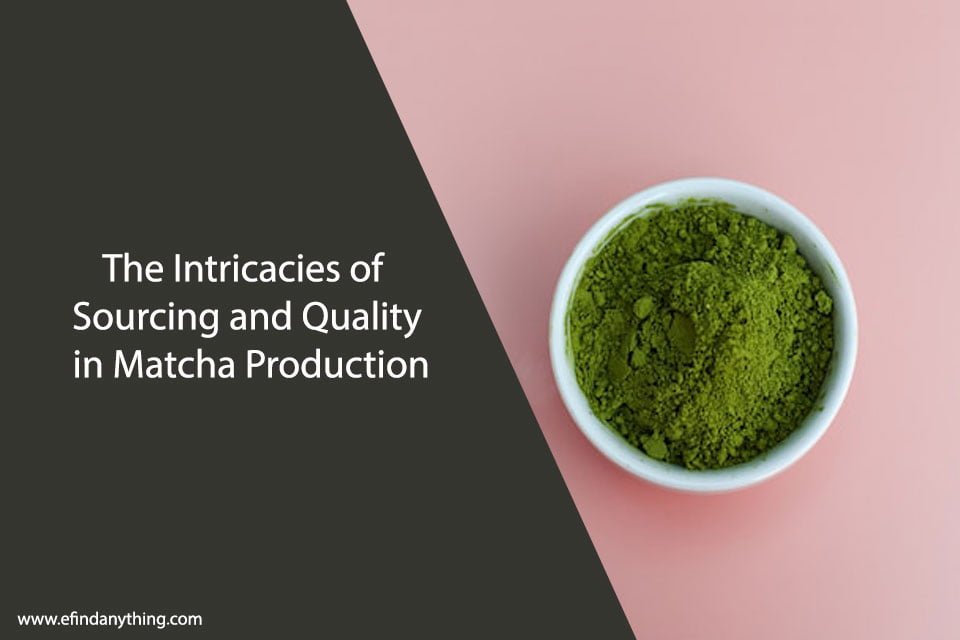The world of tea is vast, intricate, and deeply cultural. Among its vast offerings, one green powder from Japan stands out not only for its unique taste and colour but also for the meticulous processes behind its production. It’s essential to understand what sets premium-quality matcha apart from the rest. Let’s delve deep into the realm of sourcing and quality of this iconic Japanese beverage.

Table of Contents
The Traditional Regions of Production
In the heart of Japan, specific regions have been historically celebrated for producing the finest green tea powder. These regions, primarily Uji in Kyoto and Nishio in Aichi, are blessed with ideal climatic conditions, perfect rainfall patterns, and fertile soils that make them hubs of traditional tea cultivation. The tea bushes are grown under shaded conditions, usually using bamboo or straw screens, which helps enhance the flavour and nutrient profile of the leaves. When these leaves are harvested and processed, the resulting powder is a culmination of the efforts of numerous skilled individuals. The love, dedication, and craftsmanship they invest, combined with the pristine conditions of these regions, make the tea truly special.
The Hallmarks of Genuine Quality
Quality is paramount when it comes to this herb, and certain markers help discerning enthusiasts identify the best. The shade of green in genuine, high-quality produce is vibrant and deep – a testimony to its freshness and purity. A fine texture that feels soft to the touch, neither too coarse nor too chalky, indicates meticulous grinding processes. The aroma is another reliable indicator. It should be fresh, grassy, and invigorating, with subtle undertones that might remind one of fresh spring mornings. When whisked in water, it should produce a frothy layer, and its taste should be a harmonious blend of umami, sweetness, and a touch of bitterness. Each sip should invoke the rich heritage of its origin.
The Importance of Traditional Farming Techniques
While modern agriculture heavily leans on chemicals for quicker results, genuine production reveres the age-old farming techniques passed down through generations. Organic farming, the usage of natural composts, crop rotation, and even certain pruning techniques play a crucial role in ensuring the tea bushes grow healthily. Introducing natural predators into the tea gardens, like ladybugs, keeps harmful pests at bay, ensuring that the leaves remain untainted by synthetic compounds. This dedication to traditional methods not only preserves the natural taste but ensures the drinker receives all the health benefits in their most potent form.
Processing: An Art and Science
The transformation of the tea leaves into the revered green powder involves intricate processes that are both an art and a science. After harvesting, the leaves are immediately steamed to halt the oxidation process. This step is crucial in preserving the characteristic green colour and fresh taste. The leaves are then air-dried in specialised drying rooms or under the sun, followed by a period of aging which deepens their flavour profile. When the time is ripe, they’re taken to grinding rooms, where traditional granite stone mills transform them into fine powder. This slow, labour-intensive method, often taking up to an hour to produce a mere 30 grams, ensures that the tea’s delicate nutrients and flavours are preserved.
A Global Treasure with Deep Roots
While matcha might seem like a recent global phenomenon, its roots in Japanese culture run deep. It’s been an integral part of Japanese tea ceremonies for centuries, symbolising harmony, respect, and tranquillity. Beyond just a beverage, it’s a reflection of the Japanese philosophy of bringing mindfulness to everyday activities. As its popularity continues to soar worldwide, new enthusiasts are introduced not only to its taste but to the profound history and cultural significance it carries. Every cup is an invitation to participate in a tradition that spans hundreds of years.
Conclusion:
In conclusion, the allure of matcha is not just in its vibrant hue or unique taste but in the stories, traditions, and meticulous care that shape its journey from leaf to cup. Recognising and cherishing these nuances elevates every sip into a holistic experience.





